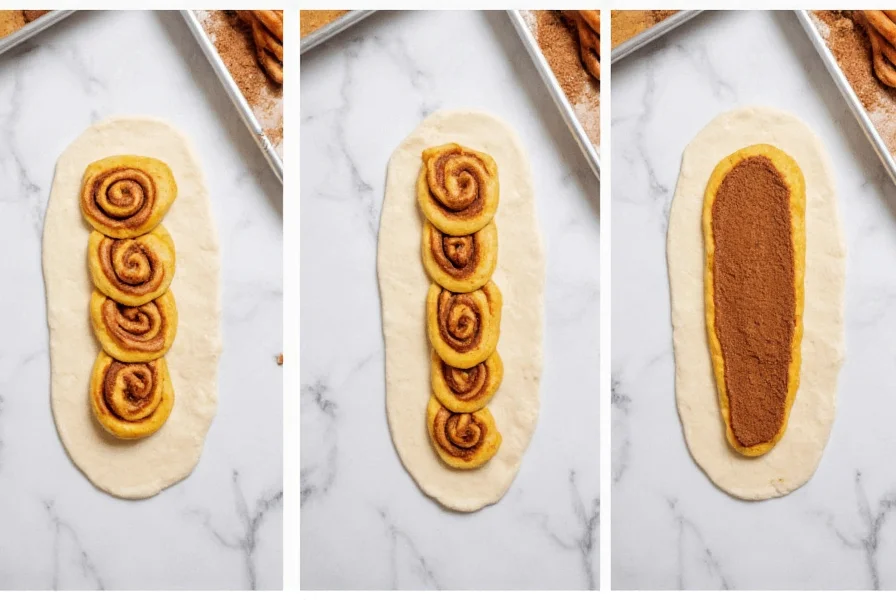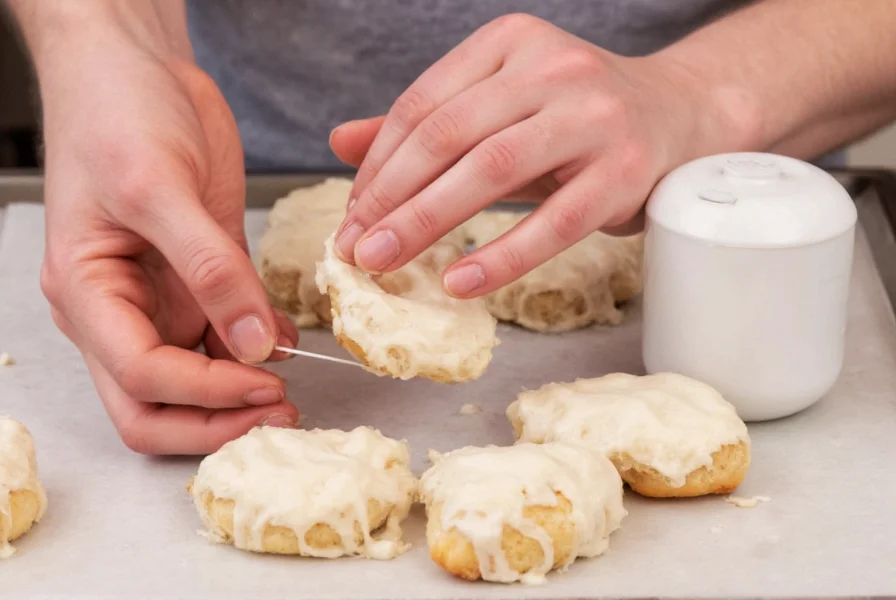The best way to make cinnamon rolls is by preparing a yeast-based dough with precise measurements, allowing proper rising time, creating a balanced cinnamon-sugar-butter filling, and baking at 350°F (175°C) for 20-25 minutes until golden brown. This guide provides a tested recipe with professional techniques for soft, fluffy homemade cinnamon rolls every time.
Creating perfect cinnamon rolls from scratch might seem intimidating, but with the right technique and attention to detail, you can bake bakery-quality rolls at home. The key is understanding the dough chemistry, proper rising conditions, and filling ratios that create that signature swirl of cinnamon goodness. This comprehensive guide walks through each step with professional insights you won't find in basic recipes.
Essential Ingredients for Perfect Cinnamon Rolls
Quality ingredients make the difference between dense, disappointing rolls and light, fluffy perfection. Don't substitute critical components without understanding their role in the baking process.
| Ingredient | Amount | Why It Matters |
|---|---|---|
| All-purpose flour | 4½ cups (560g) | Provides structure; measure properly by spooning and leveling |
| Active dry yeast | 2¼ tsp (7g) | Must be fresh; test activation in warm liquid before use |
| Whole milk | 1 cup (240ml) | Fat content creates richer texture than skim milk |
| Unsalted butter | ½ cup (113g) | Room temperature for proper incorporation |
| Granulated sugar | ⅓ cup (65g) | Feeds yeast and balances cinnamon filling |
| Large eggs | 2 | Room temperature for even mixing |
Cinnamon Roll Filling Components
The filling ratio determines whether your rolls will be overly sweet or perfectly balanced. This professional cinnamon roll filling recipe creates that signature swirl without leaking during baking:
- ¾ cup (170g) unsalted butter, softened to room temperature
- 1½ cups (300g) packed light brown sugar
- 3 tablespoons high-quality ground cinnamon (Ceylon preferred)
- ¼ teaspoon fine sea salt
- ½ cup (60g) chopped pecans or walnuts (optional)

Professional Technique: Making Cinnamon Roll Dough
Achieving the ideal dough texture requires understanding gluten development and proper yeast activation. Many home bakers fail at cinnamon rolls because they skip these critical steps:
- Activate your yeast properly: Combine warm milk (105-110°F), 1 tablespoon sugar, and yeast. Wait 5-10 minutes until foamy. If it doesn't bubble, your yeast is dead—start over.
- Mix dough ingredients: In stand mixer with dough hook, combine activated yeast mixture, remaining sugar, eggs, softened butter, and 2 cups flour. Mix on low until combined.
- Develop gluten gradually: Add remaining flour ½ cup at a time until dough pulls away from bowl but remains slightly sticky. Proper dough should pass the "windowpane test"—stretch a small piece thin enough to see light through without tearing.
- First rise: Place dough in lightly oiled bowl, cover with damp cloth, and let rise in warm spot (75-80°F) for 1-1.5 hours until doubled. Don't rush this step—proper fermentation develops flavor.
Rolling and Cutting for Perfect Swirls
How you roll your cinnamon rolls determines their appearance and texture. Follow these professional bakery techniques:
- Punch down risen dough and roll into 18x12 inch rectangle on lightly floured surface
- Spread softened butter evenly to ½ inch from edges
- Mix brown sugar, cinnamon, and salt; sprinkle evenly over butter
- Roll tightly from long side, pinching seam to seal
- Use unflavored dental floss or sharp knife to cut into 12 equal pieces (1½ inches each)
- Place rolls in greased 9x13 inch pan, leaving space for expansion
- Cover and let rise 30-45 minutes until puffy

Baking and Icing for Optimal Results
Baking temperature and timing are critical for achieving that perfect golden brown exterior with soft interior. Many home bakers underbake or overbake their cinnamon rolls:
- Bake at 350°F (175°C) for 20-25 minutes until golden brown
- Internal temperature should reach 190°F (88°C) when tested with instant-read thermometer
- Prepare icing while rolls bake: whisk 4 oz cream cheese, ¼ cup butter, 1½ cups powdered sugar, 1 tsp vanilla, and 1-2 tbsp milk until smooth
- Apply icing immediately after baking while rolls are still warm
Troubleshooting Common Cinnamon Roll Problems
Even experienced bakers encounter issues. Here's how to fix the most common cinnamon roll problems:
- Dense, heavy rolls: Usually caused by too much flour or under-proofed dough. Measure flour properly by spooning into measuring cup and leveling. Allow full rising time.
- Filling leaking out: Butter was too soft when assembling, or rolls were overfilled. Use room temperature (not melted) butter and don't exceed ¾ cup filling.
- Rolls spreading sideways: Dough wasn't rolled tightly enough or second rise was too long. Roll firmly and watch carefully during final proof.
- Burnt bottoms: Pan was too dark or placed too low in oven. Use light-colored pan and position in center rack.
Variations for Different Dietary Needs
Adapt this classic cinnamon roll recipe for various dietary requirements without sacrificing flavor:
- Gluten-free: Substitute with 1:1 gluten-free flour blend and add 1 tsp xanthan gum. Expect slightly denser texture.
- Vegan: Replace dairy with almond milk, use vegan butter, and substitute eggs with flax eggs (1 tbsp ground flax + 3 tbsp water per egg).
- Lower sugar: Reduce filling sugar to 1 cup and use sugar substitute in icing. Note: yeast requires some sugar to activate properly.
Storage and Reheating Instructions
Proper storage maintains freshness and texture. Never store cinnamon rolls in airtight container at room temperature—they'll become soggy from trapped moisture.
- Room temperature: Cover loosely with clean kitchen towel for up to 24 hours
- Refrigerator: Store in single layer with parchment between rolls for up to 5 days
- Freezer: Wrap individual rolls tightly in plastic, then foil; freeze up to 3 months
- Reheating: Microwave frozen roll 20-30 seconds, then finish in 300°F oven for 5 minutes for best texture











 浙公网安备
33010002000092号
浙公网安备
33010002000092号 浙B2-20120091-4
浙B2-20120091-4